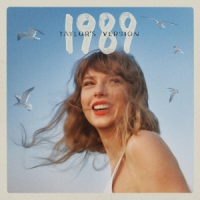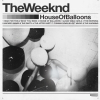In the realm of modern pop music, Taylor Swift's "1989" emerges as a remarkable testament to the artist's audacious leap from her country roots into the vibrant world of pop. Released on October 27, 2014, this album not only symbolizes Swift's artistic rebirth but also stands as a homage to the synth-laden soundscapes of the 1980s.
Embracing a New Sonic Landscape
Swift's "1989" is a synth-pop odyssey that boldly departs from the acoustic signatures of her earlier work. With a production team featuring powerhouses like Max Martin and Jack Antonoff, the album is a meticulously crafted blend of pulsing synthesizers and processed vocals, steering clear of the hip-hop and R&B elements prevalent in contemporary pop. This decision not only distinguishes "1989" but also serves as a testament to Swift's desire to forge a path uniquely her own.
Lyricism That Resonates
At the heart of "1989" lies Swift's signature storytelling, albeit with a twist. Moving away from the vilification of past lovers, she adopts a more introspective and forgiving lens, reflecting on failed romances with a mix of wistfulness and light-heartedness. Tracks like "Blank Space" offer a satirical take on Swift's media-crafted persona, showcasing her ability to engage with her narrative on a meta-level. This evolution in her songwriting not only enriches the album's emotional depth but also broadens its appeal.
A Strategically Orchestrated Launch
Swift's approach to marketing "1989" was nothing short of revolutionary, blending traditional promotions with innovative fan engagement strategies. From exclusive album listening sessions dubbed "Secret Sessions" to a calculated withdrawal from streaming services, Swift redefined the album release playbook. This multi-faceted promotion strategy not only fueled anticipation but also sparked industry-wide conversations about the value of music in the streaming era.
The Tour That Captured Hearts
The "1989 World Tour" was a spectacle of grandeur that brought the album's essence to life on stage. With its record-breaking earnings and a slew of special guests, the tour underscored Swift's status as a pop icon while providing fans a tangible connection to the music. The tour's success further cemented "1989" not just as an album but as a global phenomenon.
The Double-Edged Sword of Pop Transition
Despite its overwhelming success, "1989" was not without its critics. Some long-time fans and critics viewed Swift's pivot to pop as a departure from her authentic self, lamenting the loss of the acoustic charm that defined her earlier works. Additionally, the heavy reliance on synth-pop production was seen by some as overshadowing the lyrical depth that Swift is known for, suggesting a potential compromise of artistic integrity for mainstream appeal.
Conclusion
Taylor Swift's "1989" stands as a bold declaration of artistic independence and a masterclass in pop music production. Its impact extends beyond chart-topping hits, influencing the music industry's approach to album promotion, artist-fan engagement, and the ongoing discussion about music streaming. While the transition to pop was met with mixed reactions, the album's legacy is undeniable, marking a pivotal moment in Swift's career and in the landscape of 21st-century pop music.














